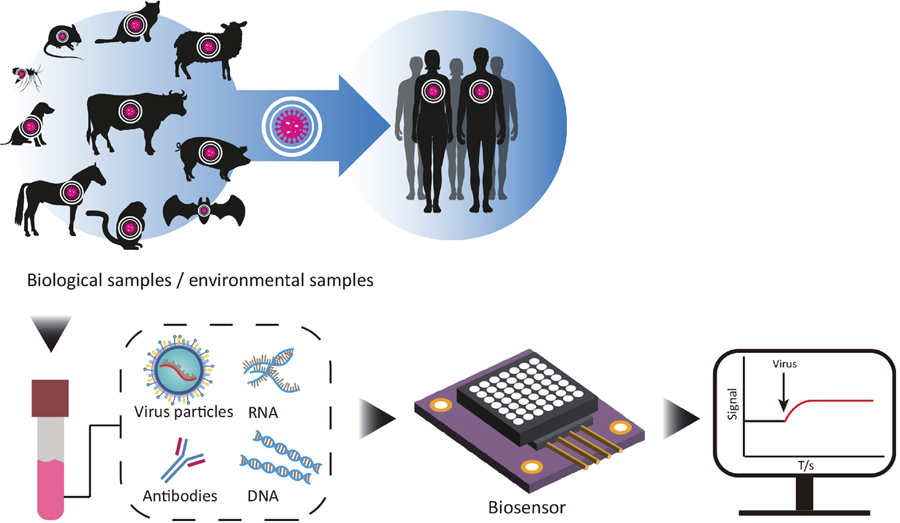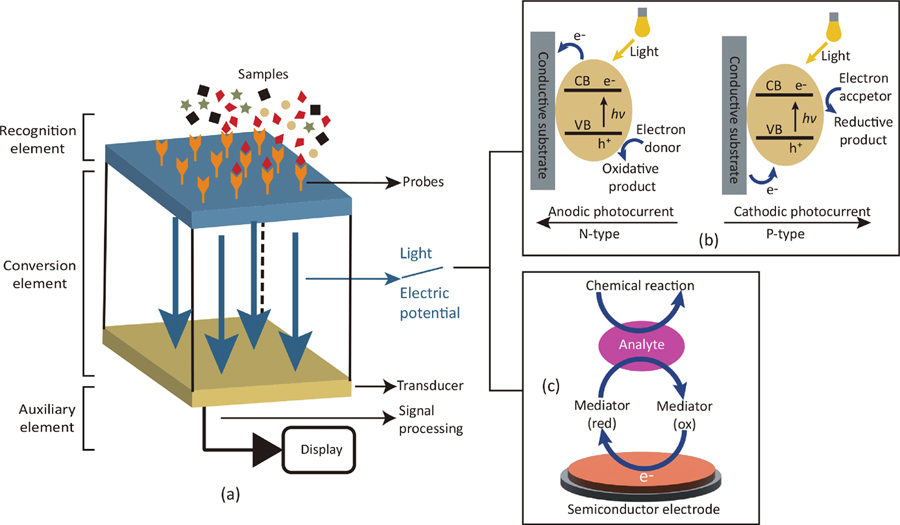Jiahao Zheng, Chunyan Feng, Songyin Qiu, Ke Xu, Caixia Wang, Xiaofei Liu, Jizhou Lv, Haoyang Yu, Shaoqiang Wu. Application and prospect of semiconductor biosensors in detection of viral zoonoses[J]. Journal of Semiconductors, 2023, 44(2): 023102
Search by keywords or author
- Journal of Semiconductors
- Vol. 44, Issue 2, 023102 (2023)

Fig. 1. (Color online) Schematic process of the detection of biosensor. Samples are collected from animals, human, and environment, then the virus particles, antibodies, RNA or DNA are targeted and detected by semiconductor biosensors. The signals are finally displayed by visible image.

Fig. 2. (Color online) Schematic representation of the major principles of semiconductor biosensors. (a) Schematic representation of the identification process, the key point is the recognition and conversion element. (b) Schematic representation of the major principles for optical biosensors. (c) Schematic representation of the major principles for electrochemical biosensors.
Fig. 3. (Color online) Schematic representation of the major principles of graphene based semiconductor biosensors. (a) Representation of the major principles of graphene FET biosensors. (b) Representation of the major principles of graphene based optical biosensors.
Fig. 4. (Color online) Schematic representation of the major principle of silicon nanowire based semiconductor biosensor.
|
Table 0. Summary of Silicon Nanowire-based biosensors which applied in detection of viral zoonoses.
|
Table 0. Amplification strategies used to amplify the aimed nucleotides of the pathogens of viral zoonoses.
|
Table 0. The overview of the graphene-based biosensors detection of viral zoonoses in the last 5 years. (Table was complemented based on Ref. [38]).
|
Table 0. Summary of CNT based biosensors which applied in detection of viral zoonoses.

Set citation alerts for the article
Please enter your email address



